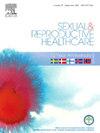Impact of timed and targeted counselling on the maternal health continuum of care outcomes in Northern Uganda: A propensity score matched analysis
IF 1.7
3区 医学
Q3 PUBLIC, ENVIRONMENTAL & OCCUPATIONAL HEALTH
引用次数: 0
Abstract
Objective
Improving maternal health is key to saving lives of women who would otherwise die due to pregnancy and childbirth related complications, especially in developing countries. The timed and targeted counseling (ttC) approach, delivered by community health workers, is a behavioural change counseling approach for improving maternal health. This approach focuses on giving stage appropriate messages to pregnant women regarding the timing of antenatal care visits, where to deliver and postnatal care. The purpose of this study therefore is to examine the impact of ttC on the maternal health continuum of care outcomes in Northern Uganda.
Methods
A cross-sectional quasi-experimental design with propensity score matching (PSM) analysis was used with retrospective data collection comparing an intervention group(Aber subcounty) to a comparison group (Otwal subcounty) in Northern Uganda. PSM was done to determine the causal relation between ttC and the maternal health outcomes. The primary outcome measures were having four or more antenatal care visits(4+ ANC), delivery at the advised place of delivery(PoD) and having(at least one) postnatal care(PNC) visit.
Results
The PSM analysis showed that participants receiving ttC were significantly more likely to have 4 + ANC attendance (OR = 15.61, 95 % CI 9.4–25.8), PoD (OR = 2.36, 95 % CI 1.4–4.1) and PNC (OR = 1.67, 95 % CI 1.0–2.7) than participants receiving care as usual.
Conclusion
Implementation of ttC in similar low resource settings likely leads to improved maternal health continuum of care outcomes and therefore the government of Uganda should integrate ttC into its already existing health care system for more effective maternal health.
定时和有针对性的咨询对乌干达北部孕产妇保健连续护理结果的影响:倾向评分匹配分析
目标改善孕产妇保健是挽救妇女生命的关键,否则妇女将因妊娠和分娩相关并发症而死亡,特别是在发展中国家。由社区卫生工作者提供的定时和有针对性的咨询(ttC)方法是一种改善孕产妇健康的行为改变咨询方法。这种方法的重点是向孕妇提供适当阶段的信息,包括产前检查的时间、分娩地点和产后护理。因此,本研究的目的是检查ttC对乌干达北部孕产妇健康连续护理结果的影响。方法采用倾向评分匹配(PSM)分析的横断面准实验设计,回顾性收集乌干达北部干预组(Aber县)和对照组(Otwal县)的数据。进行PSM以确定ttC与孕产妇健康结果之间的因果关系。主要结局指标为四次或以上产前保健检查(4+ ANC),在建议分娩地点(PoD)分娩,以及(至少一次)产后保健检查(PNC)。ResultsThe PSM分析表明,参与者接受ttC明显更可能有4 + ANC出席(或 = 15.61 95 %可信区间9.4 - -25.8),PoD(或 = 2.36 95 %可信区间1.4 - -4.1)和PNC(或 = 1.67 95 %可信区间1.0 - -2.7)比参与者接受医疗服务,像往常一样。结论:在类似的低资源环境中实施ttC可能会改善孕产妇健康的连续性护理结果,因此乌干达政府应将ttC纳入其现有的卫生保健系统,以提高孕产妇健康的有效性。
本文章由计算机程序翻译,如有差异,请以英文原文为准。
求助全文
约1分钟内获得全文
求助全文
来源期刊

Sexual & Reproductive Healthcare
PUBLIC, ENVIRONMENTAL & OCCUPATIONAL HEALTH-
CiteScore
2.70
自引率
5.60%
发文量
73
审稿时长
45 days
 求助内容:
求助内容: 应助结果提醒方式:
应助结果提醒方式:


